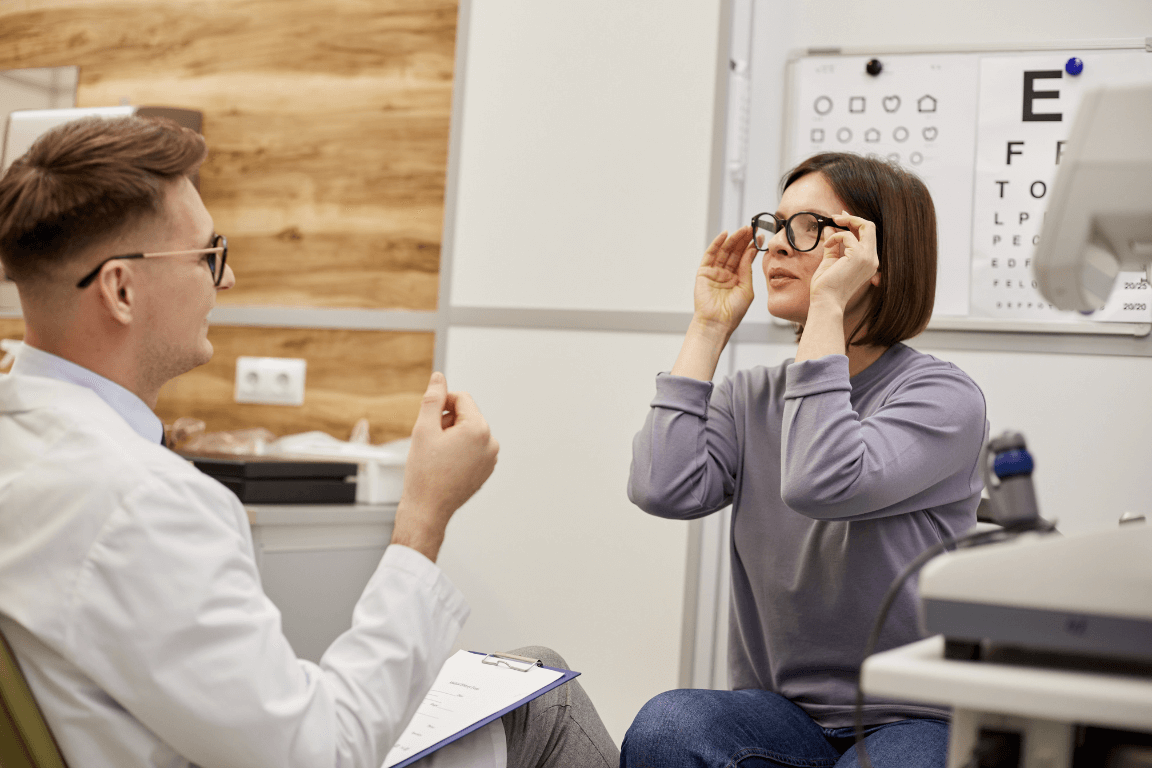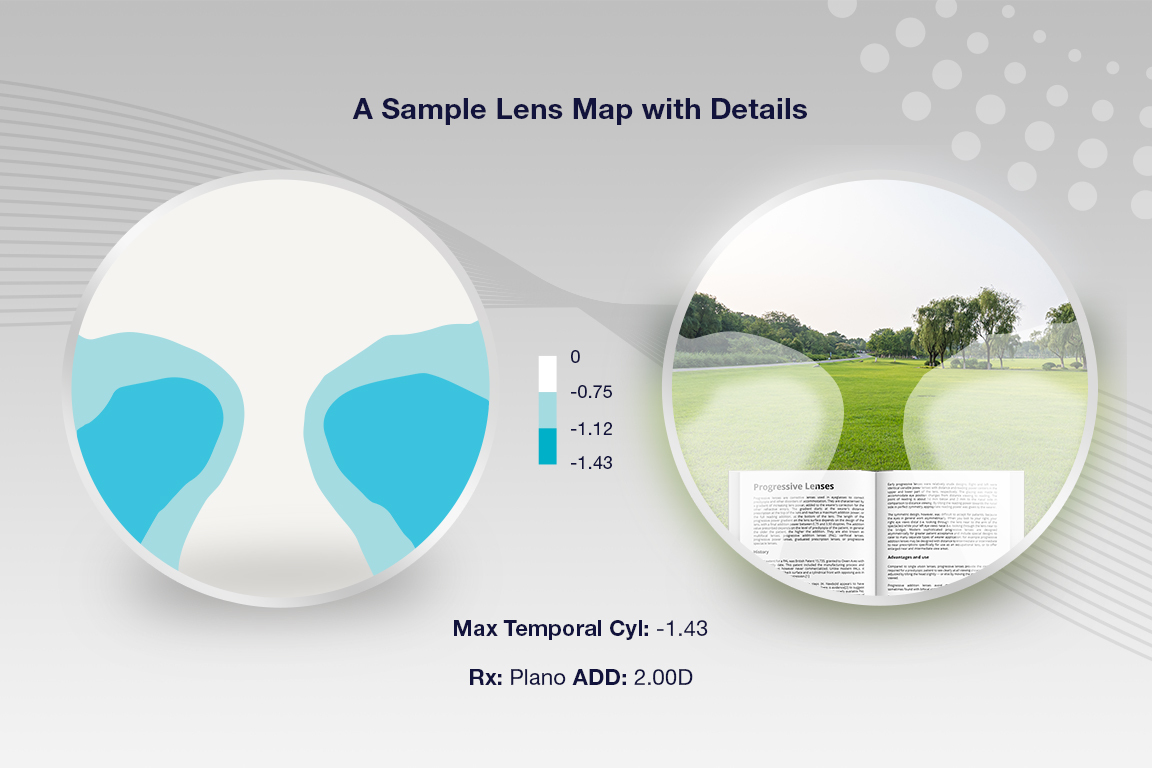For the general optometrist who has been trained through any one of Australia’s optometry schools, refraction is considered the bread and butter of the profession. Alongside learning the difference between a plus lens and minus lens, and how to reach an acceptable end-point in the refraction, is the idea that a precise refraction is performed (and prescribed) in quarter-dioptre increments. However, with the current advance in refractive technologies such as the Visionix VX650, have you considered that perhaps the new, very achievable standard of modern refraction should be to 0.12D accuracy?
The Technology is Available
With instruments capable of measuring a patient’s refractive error to pinpoint accuracy, supported by tools capable of creating these freeform high-definition lenses in power increments as minute as 0.01D,¹ this can now be the starting point and there is little reason to adhere to the conventional 0.25D minimum increment as the standard.
Tools such as the Visionix VX650 and VX130+, and Potec Auto Ref-Keratometer are fully capable of providing a precise refraction to at least 0.12D accuracy. The Shack-Hartmann wavefront analysis provided by the Visionix instruments enables an assessment of the higher order aberrations of the eye, including trefoil, coma, and spherical aberration. Manual trial lens sets also often include +/- 0.12D lenses as do digital phoropters, such as the Huvitz Digital Refractor HDR-9000.
The use of computer-controlled surfacing equipment is able to fabricate spectacle lenses accordingly, known as freeform or digital high-definition lenses. Assessing higher order aberrations and formulating a prescription to a greater degree of accuracy can be the difference between a happy 6/6 patient and a patient with “perfect VA” but who still seems dissatisfied with their vision. By offering a freeform lens with an accurate refraction, you can give your patients sharper image quality, improved peripheral vision, better contrast sensitivity, and reduce the impact from glare.¹
Appreciating the Difference
Will all patients be able to discern a 0.12D change to their prescription? The answer would naturally be no. To make an extreme example, a patient with dense cataract and a VA of 6/60 would of course be completely oblivious to an increment of one-eighth of a dioptre – in fact, they would most likely have difficulty discerning 0.50D or even 1.00D changes. This is the concept of just noticeable difference (JND).
JND as it applies during a subjective refraction is based on a principle known as the Weber-Fechner Law of Difference Threshold. The law is a mathematical formula describing the observation that as the magnitude of a stimulus changes, the magnitude of change must alter in proportion to the original stimulus level in order to remain discernible. In other words, “the change in a stimulus that will be just noticeable is a constant ratio of the original stimulus”.² In a clinical setting, JND is a measurement of an individual’s best corrected visual acuity based on their subjective ability to notice dioptric alterations during the refraction process and in their final prescribed correction.
The concept of JND is often used in low vision practice. It can be calculated by converting the patient’s best corrected visual acuity into imperial notation (for example, 6/6 acuity becomes 20/20).3 The JND is therefore 0.20, or, for more realistic purposes, 0.25D. For patients whose best corrected visual acuity has the potential to be as fine as 6/5 (20/16) or even 6/3 (20/10), the just noticeable difference is therefore as minute as 0.10D – or 0.12D as available in your trial lens sets or digital refractors.
Identifying Patients Who Will Benefit
As earlier pointed out with the patient with dense cataract and 6/60 best corrected vision, not all patients will appreciate a refraction fine-tuned to 0.12D precision or care to pay for a freeform spectacle lens when a conventional one will do.
It can be difficult to make a judgement on whether it’s worthwhile asking the individual in your chair to discern a one-eighth dioptre change. By taking a thorough history and getting a sense of the patient’s personality through conversation, you can determine whether their visual requirements and personality traits make them a good candidate for refining their prescription to such a degree. Optometrists often do something similar when considering referring a patient for cataract surgery – does the patient require fine discrimination for their typical visual tasks or is 6/9.5 visual acuity more than adequate? Despite being able to see well enough to function, is the individual in your chair bothered or distressed by the perception of blur? The same decision-making process can be applied, at least in part, when it comes to refracting any patient. Clinicians who have practised for any length of time know that there can be a wide discrepancy in visual acuity measurement and how individuals subjectively perceive the quality of their vision. One person with a visual acuity of 6/12 may be quite content with their sight while another individual with an acuity of 6/6 can still feel that their vision is not quite right.
Also consider basic demographic factors when assessing the value of a 0.12D refinement during your refraction. Young patients with fully intact retinal structure and function and no significant changes to the crystalline lens tend to be better able to appreciate a 0.12D change. Additionally, myopic patients are typically more discerning about the clarity of their vision, are more likely to benefit from this finer precision in their refraction.³
Summary
With technology able to refract a patient to 0.12D precision as well as the ability to fabricate a lens to an accuracy of 0.03D, there is little reason for optometrists to continue adhering to a blanket 0.25D increment during their refractions. As many individuals with a healthy visual system are able to achieve better than 6/6 acuity, the JND that should be implemented during a refraction must be smaller than the traditional 0.25D steps. By appropriately identifying the patients who are likely to benefit from a 0.12D refinement to their prescription and offering a lens that can match this accuracy, clinicians can provide superior visual outcomes – a great practice builder!
References
- All About Vision. High-definition eyeglass lenses. https://www.allaboutvision.com/. 2019. Available at: https://www.allaboutvision.com/lenses/wavefront-lenses.htm. (Accessed August 2023).
- Britannica. Weber’s law. https://www.britannica.com/. 1998. Available at: https://www.britannica.com/science/Webers-law. (Accessed August 2023).
- Healio. Identify patients who can benefit from 0.12D correction. https://www.healio.com/. 2016. Available at: https://www.healio.com/news/optometry/20160812/identify-patients-who-can-benefit-from-012-d-correction. (Accessed August 2023).





